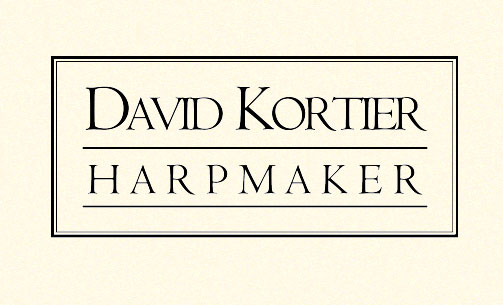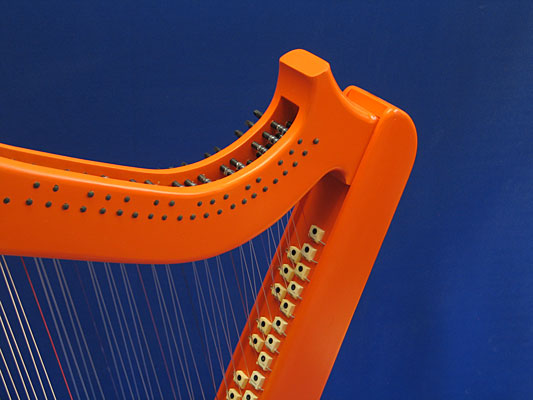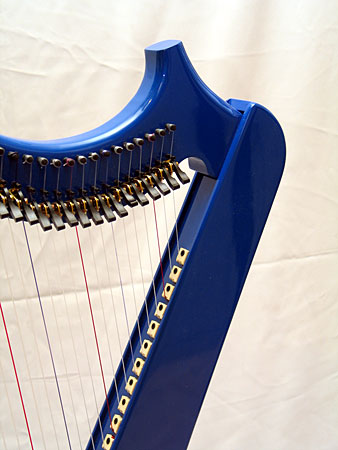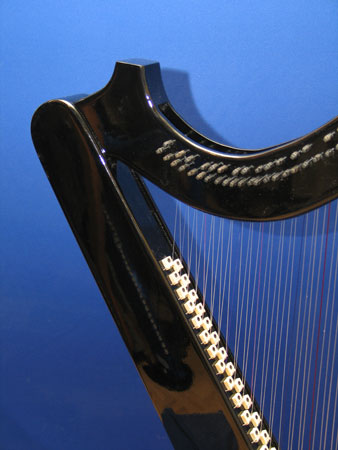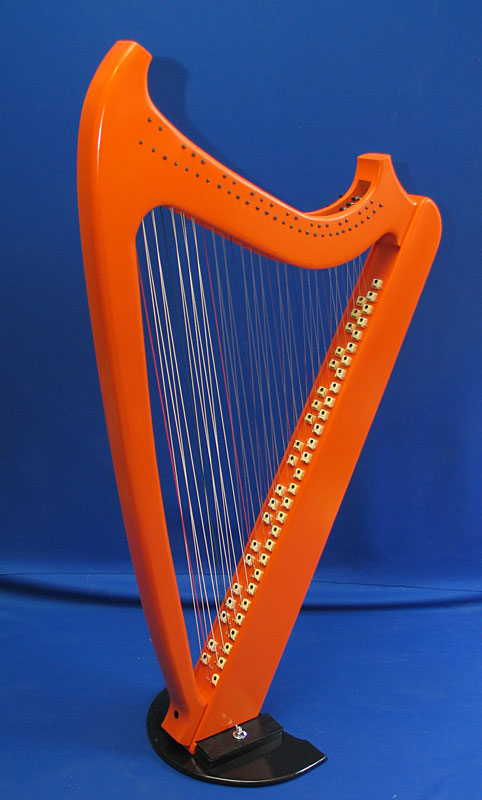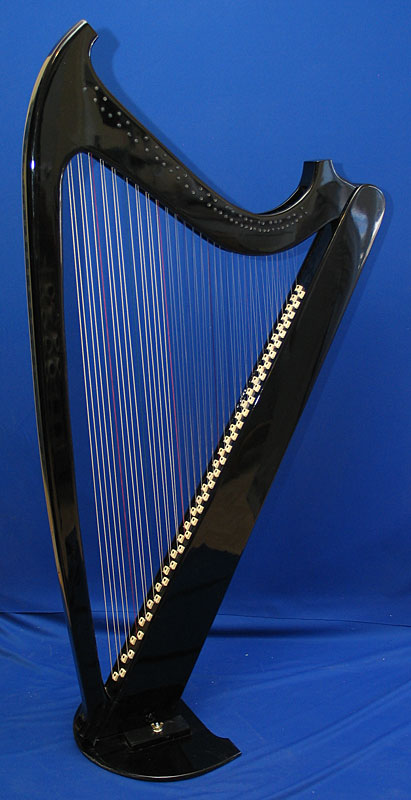Kortier Chromatic Harps, cross strung.
Harps are in essence diatonic instruments. Or, to say this another way, harp strings are like the white keys of a piano, they produce a natural scale when played in succession. But if you want to play in different keys you have two options- you can retune strings (retune the F strings to F#, for example), or you can mechanically shorten selected strings using levers or pedals, without retuning. The history of the harp has been one of innovation, trying to come up with easier and more accurate ways of altering the pitch of strings, and to do it quickly.
But there is another plan, and it has been around for centuries. One simply installs a string for every possible pitch. Then regardless of what pitch is desired, the harpist can immediately produce it. Instead of 7 different notes (strings) per octave, we have 12. This would seem to be the answer, so why hasn't it been embraced by the harp playing world if it is not a new idea?
1231 E. 9th Street, Duluth MN 55805 email me at: david@kortier.com
A sticking point is the arrangement of the strings, how they are spaced in relation to each other. The player must be able to reach all strings with equal ease, and the octaves can't be beyond the hand span. Harpists are familiar with the diatonic scale, so chromatic harps often have the same 7 strings evenly spaced, but with the "extra" strings added alongside, similar to the piano keyboard. In this case the harpist must reach between the diatonic strings to play the "black notes."
The scheme of passing the extra strings between the diatonic strings is another possibility. The strings form an X, and this enables the player to reach all strings without reaching between. Notes are played either above or below the "cross," the point at which the strings intersect. Note that the diatonic pattern is equally spaced only when playing in the key of C. For example, the distance from E to F, a half step, is the same as the distance from F to G, a whole step. The player must use different hand postions depending on the key signature.
A variation on this scheme eliminates the gaps in the pattern. By arranging the strings so that there are equal spaces between all, and strictly alternating sides, we end up with a symetrical pattern. This scheme is often referred to as the 6,6 pattern, meaning that there are six whole steps on one side of the X and six whole steps on the other side of the X. You might think that this would be confusing, but in reality it is very practical. All finger patterns are the same regardless of what key you are playing in. Once you have learned a tune, you can play it at any pitch level (any key) simply by starting in a different place on the harp.
The thing that can be confusing about any of these arrangements is the act of tuning the harp- knowing that the peg you are turning is connected to the string you wish to change. To help with this, I retain the "keyboard" pattern in my tuning pins while arranging the strings themselves in the symetrical 6,6 pattern. When you are attempting to tune the F string, for example, it is intuitive to put the tuning wrench on the F peg without looking twice.
Routing the strings through the center of the neck also has an advantage- the X is narrower, so the playing positions of the hand are not exagerated.
I am currently building electric cross strung harps in two sizes:
The 49 string harp is 40 inches tall, very similar in size to my standard 31 string electric lever harp. It has the 2+3 arrangement of the strings. The range of this harp is to low C, two octaves below middle C. The price is $4,000.
The 61 string harp is larger, about 60 inches tall. With the 6,6 pattern of stringing the harp has a range of five full octaves, fully chromatic. The range of this harp is to low G, five strings lower than the 49 string harp. The price is $4,800.
harp with levers to shorten strings
But to answer the question "Why is this form of the harp not more common?" it probably comes down to familiarity. Diatonic harps are the instrument most people learn on. To start playing a somewhat different instrument would mean relearning some skills. But I suggest that it is worth the trouble. Playing in all keys with equal ease, and never having maintanence issues with levers or pedal mechanisms are compelling reasons.
